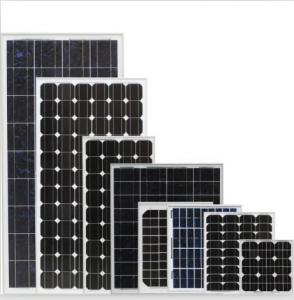LDK 60-cell MONO MODULE 265W Low price and High Efficiency CE TUV Certification
- Loading Port:
- China Main Port
- Payment Terms:
- TT or LC
- Min Order Qty:
- -
- Supply Capability:
- -
OKorder Service Pledge
OKorder Financial Service
You Might Also Like
Dimensions(Laminate):1636 x 986 x 35 mm[64.41 x 38.82 x 1.38 in]
Solar Cells:60 (6x10) monocrystalline silicon -
156 x 156 mm [6 inch] solar cells
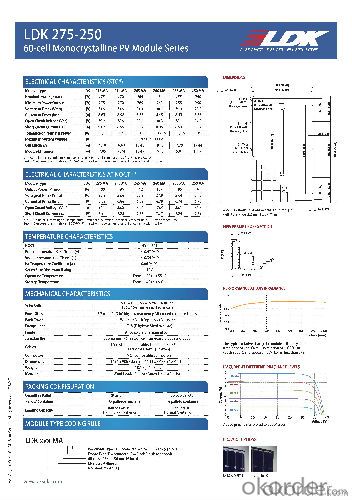
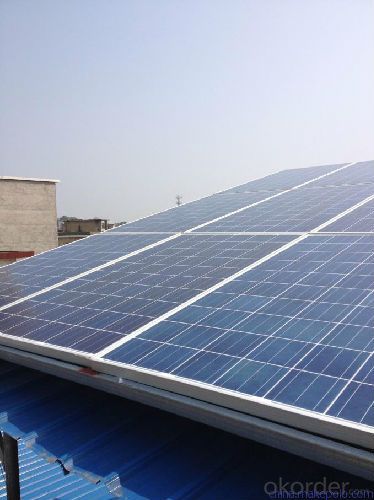
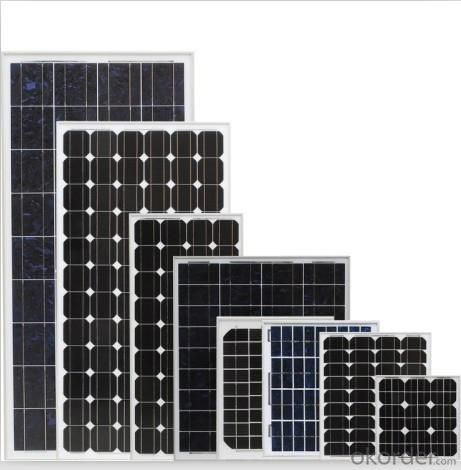
Why US?
· Industry leading module power output warranty of 25 years
· International quality and safety certifications
· Manufactured in ISO 9000 certified factories
· High-reliability with guaranteed 0/+5W peak power classification
· Excellent performance under low light environments
· Entire module certified to withstand high wind and snow loads
Warranty
· 10 years for product defects in materials and workmanship
· First 12 years for 90% of warranted minimum power
· Remaining 25 years for 80% of warranted minimum power
Vertically integrating business model enables us to
· Consistently build high quality and reliable PV products.
· Optimize our cost structure to deliver price-competitive products.
· Adopt cutting-edge product and production technologies.
· Develop the most advanced manufacturing methods.
· Minimize carbon emissions throughout our closed loop production process.
Certification
· IEC:IEC 61215, IEC 61730 (1&2), conformity to CE
· UL 1703 2002/03/15 Ed:3 Rev:2004/06/30
· ULC/ORD-C1703-01 Second Edition 2001/01/01
· UL and Canadian Standard for Safety Flat-Plate
· ISO 9001: 2008 Quality Management Systems
· CEC Listed: Modules are eligible for California Rebates
· PV Cycle: Voluntary module take back and recycling program
· MCS Certificate
After-sales Services Undertakings
1. During the equipment commissioning period, the company will send scheduler to commissioning to ensure debugging smoothly and a one-time test commissioning.
2. The company is responsible for professional users’ on-site operator training and technical exchange.
3. The long-term tracking service system: we practice lifelong quality of our product tracking service, and we also will take effective measures and solutions for the user of the technical issues and equipment problems.
4. Regularly listen to opinions and suggestions of users, to provide users with new trends in technological innovation, new product information and enhance mutual understanding.
5. Any problems, the company will provide solutions for users within 48 hours.
FAQ
Where can I buy your products?
You could find our products from dealers or contact our sales team directly. We will provide you with detailed services.
How to contact us?
Contact details can be found from website www.okorder.com to contact us. We look forward to providing you with professional services.
What is the application field of your products?
They can be used in the small photovoltaic (PV) grid power generation systems of family units as well as the commercial photovoltaic system such as BIPV, BAPV and etc.
What kinds of modules do your inventers support?
Our inventers support most of mainstream components and modules in the market. Should you require more details, please do not hesitate to contact our technical personnel.


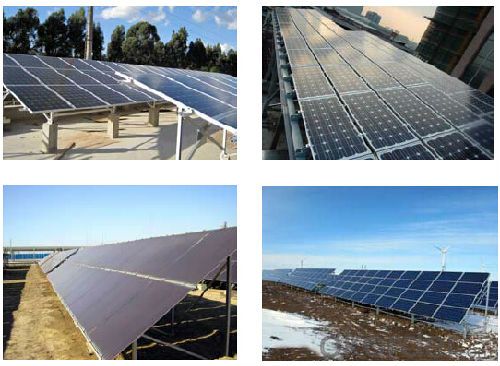
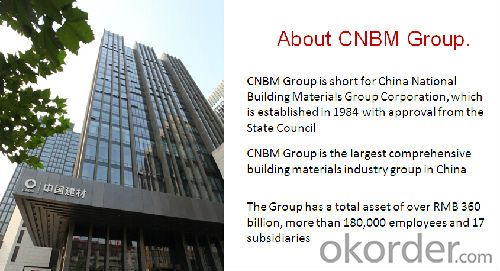

- Q:I'm about to buy one but I don't really know which one is best for my home.
- One will give you enough DC voltage to light a 25 watt light bulb, [ one 45 watt panel is around $400. ] Now if your wanting AC voltage You have to buy a inverter, 5 or 6 deep cycle batteries, a switch Cables to transfer the voltage, a place out side to store the batteries, instalation brackets for the roof A Permit to Install them
- Q:Simplfy it so i can understand pls and put it in stages such as . sun hits solar panel plsHow many different types of solar panels are there?
- Solar panels are made of a series of solar cells.solar cells are an electical device that convert sun energy directly into electicity by the photovoltaic effect,which is an physic and chemical phenomenon.solar cells are made of special materials called semiconductors such as silicon,which is currently used most commonly.Basically, when light strikes the cell, a certain portion of it is absorbed within the semiconductor material.This means that the energy of the absorbed light is transferred to the semiconductor. The energy knocks electrons loose, allowing them to flow freely.This flow of electrons is a current, this current, together with the cell's voltage (which is a result of its built-in electric field or fields), defines the power (or wattage) that the solar cell can produce.
- Q:Can solar panels be installed on satellites?
- Yes, solar panels can be and are often installed on satellites to generate electricity from sunlight for powering the satellite's various systems and instruments.
- Q:can solar panels have glass between the panels and the sun?
- As above, but also make sure the panels you use will still produce if partially shaded. Some older panels will quit producing if you so much as put your hand over a small portion of it. Newer ones don't do this but are more expensive. As you may need more panel area to produce enough energy to fill a battery (if that is how you go) make sure you have the room/roof area for additional panels.
- Q:Can solar panels be used for charging batteries?
- Yes, solar panels can be used for charging batteries. Solar panels convert sunlight into electricity, which can be stored in batteries for later use. This makes solar panels an effective and sustainable solution for charging batteries, especially in remote areas or during power outages.
- Q:Do solar panels require a backup battery system?
- No, solar panels do not necessarily require a backup battery system. However, having a battery system can be beneficial as it allows for the storage of excess energy produced by the solar panels, which can be used during times when there is no sunlight or during power outages.
- Q:Can solar panels be used in off-grid systems?
- Yes, solar panels can be used in off-grid systems. Off-grid systems are independent from the main electrical grid, and solar panels are a popular choice to generate electricity in such systems. They capture sunlight and convert it into usable electricity, which can then be stored in batteries for use when sunlight is not available. This allows off-grid systems to meet their energy needs without relying on traditional power sources.
- Q:Why are they placed there? How come they aren't placed on the floor or window.My fiance and I are interested in putting solar panels on our new home. I was really curious and google wasn't giving me the answer. My roof is pretty small in our new house and I don't think it would fit there. Why is it usually placed there and is there another place? You will be chosen as best answer if you answer all my questions. Thanks in advance, and I would appreciate if nobody is rude. Otherwise, I will have to report abuse.
- Solar panels are placed on the roof because many times the roof has good exposure to the sun providing the roof is not blocked by trees or something else so that sufficient sunlight wouldn't be absorbed. Also the panels would more likely not get damaged on the roof opposed to being in the yard. If they were mounted on the windows, how could you see? And, the windows could easily break and then what would happen to the panels? Placing the solar panels on the floor would not be practical. A lot of sunlight is needed for the cells to produce electricity and how much goes on the floor? Most roofs are at an angle which could perhaps improve the amount of sunlight the panels would get, and roofs provide a lot of unused space. The roof is the best place. Furthermore, roof solar panels are available now to blend in better with the roof so that they are more pleasing to the eye. Even if you have a small roof, some panels could be placed there provided the roof is not blocked so that the sunlight it gets would be sufficient (about 4 or 5 hours of sunlight a day is needed). And, if you needed addition panels, they could be mounted in your yard as long as the mount was close to your power box and received sufficient sunlight. I applaud your desire to use solar panels. You could possibly save 50 - 90% on your electric bill and help your environment at the same time! A Win - Win situation!!
- Q:Can solar panels be installed on a farm or agricultural facility?
- Yes, solar panels can definitely be installed on a farm or agricultural facility. In fact, many farmers and agricultural businesses are increasingly turning to solar energy to reduce their reliance on traditional power sources and lower their operating costs. Solar panels can be installed on rooftops, barns, or open fields, providing a sustainable and clean source of electricity that can power farm operations, irrigation systems, or even be sold back to the grid. Additionally, solar installations on farms can also qualify for various incentives and grants, making it an economically viable and environmentally friendly choice for farmers.
- Q:I am looking at a need of roughly 30w/hour need per 24 hour period. I have spent several hours now looking for information online and have found plenty of info regarding the panels themselves, but information regarding the batteries backups have been slim. I understand that there is a 5-7 hour peak time to collect the energy. I am looking for information regarding the batteries themselves. How do the batteries work, what size batteries should I look for, and what is the life expectency for the batteries? Any website links would also be appreciated!
- First, you didn't say the voltage. Second, 30 W/hour per day. Third, battery backup capacity in Ah = Ampere hour. For 2 Volt DC here's the calculations : 30 w/hour means = 0.83 or rounded Ampere hour. You know peak time 5-7 hour (let say 6 hour)charging time (collect the sun energy). Ampere hour per day (24 hour), with 20 Ah Battery backup is OK. And the Solar Panel is 3 Ampere charging capacity minimal = 3 Amp x 6 hour = 8 Amp hour.
1. Manufacturer Overview |
|
|---|---|
| Location | |
| Year Established | |
| Annual Output Value | |
| Main Markets | |
| Company Certifications | |
2. Manufacturer Certificates |
|
|---|---|
| a) Certification Name | |
| Range | |
| Reference | |
| Validity Period | |
3. Manufacturer Capability |
|
|---|---|
| a)Trade Capacity | |
| Nearest Port | |
| Export Percentage | |
| No.of Employees in Trade Department | |
| Language Spoken: | |
| b)Factory Information | |
| Factory Size: | |
| No. of Production Lines | |
| Contract Manufacturing | |
| Product Price Range | |
Send your message to us
LDK 60-cell MONO MODULE 265W Low price and High Efficiency CE TUV Certification
- Loading Port:
- China Main Port
- Payment Terms:
- TT or LC
- Min Order Qty:
- -
- Supply Capability:
- -
OKorder Service Pledge
OKorder Financial Service
Similar products
New products
Hot products
Related keywords
